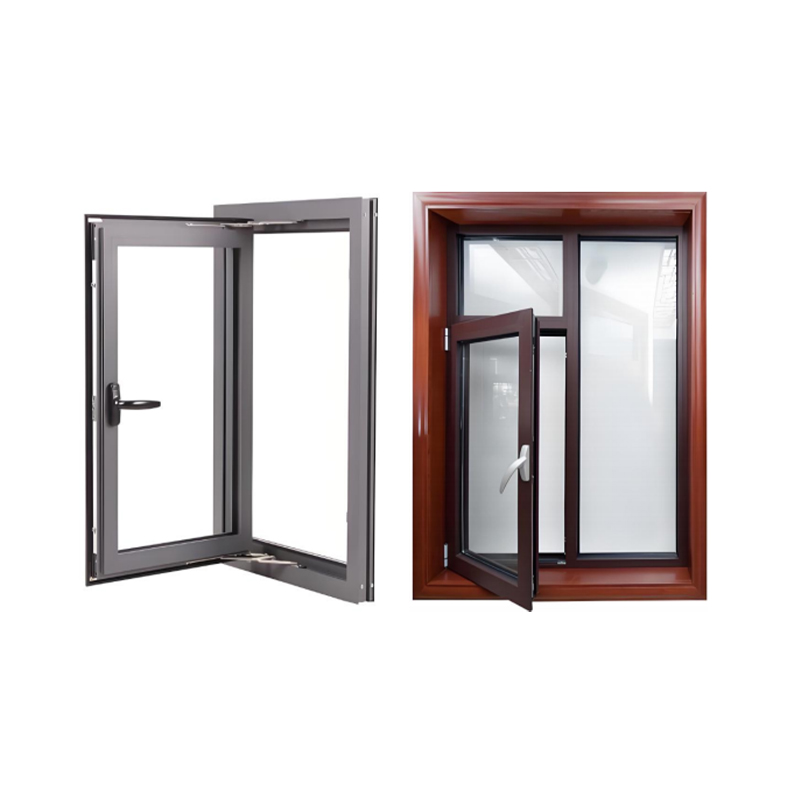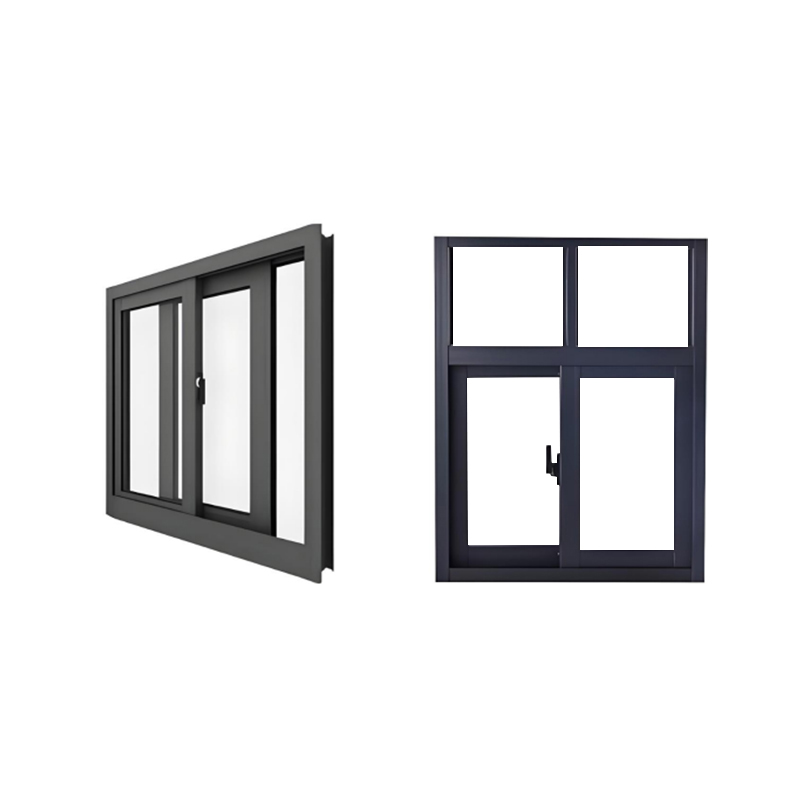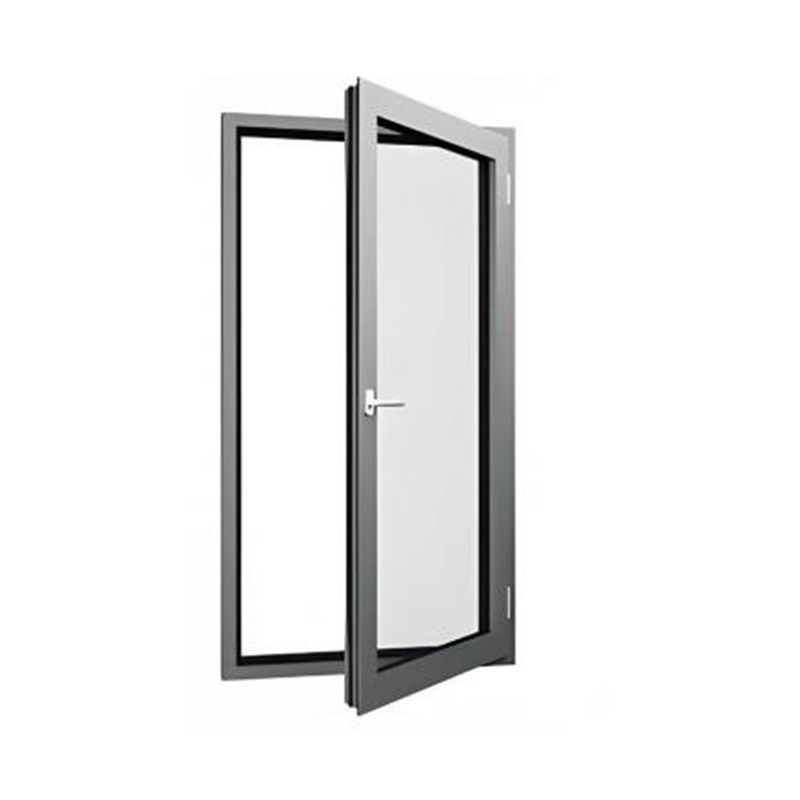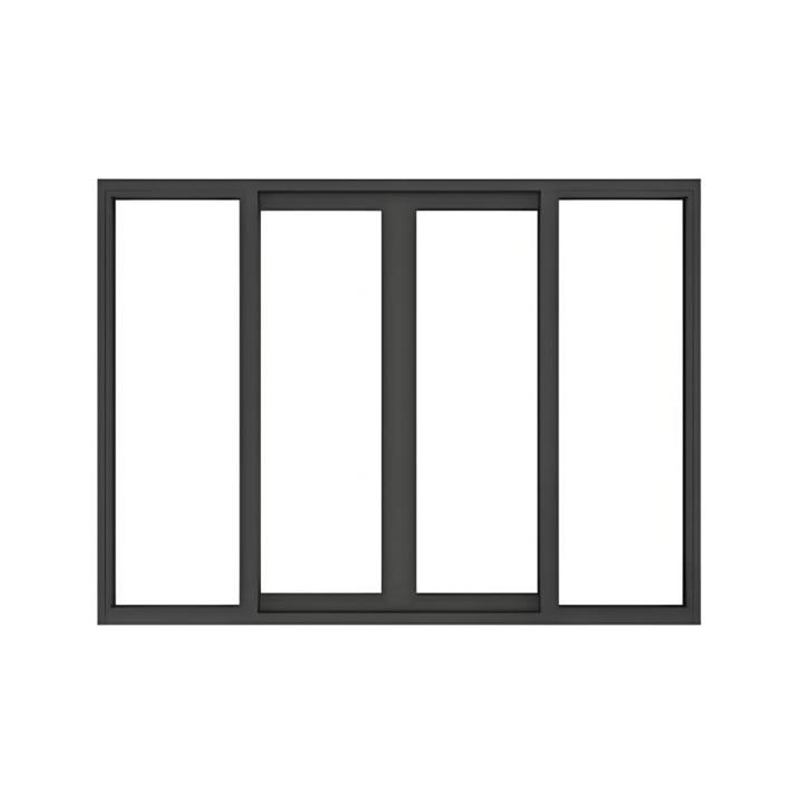How do level-out windows reflect minimalist style in modern architectural design?
Release Time : 2025-06-11
With the acceleration of urbanization and the change of people's aesthetic concepts, modern architecture is increasingly inclined to the design concept of simplicity but not simplicity. As a unique design element, level-out windows can perfectly reflect the core value of minimalism while meeting functional requirements - expressing the richest spatial experience with the least design language.
1. The beauty of lines: simple and powerful visual impact
Level-out windows, with their long strip design, break the limitations of traditional window types and create a coherent and flowing sense of space. This design not only simplifies the facade treatment, but also enhances the overall beauty of the building through horizontal extension. For example, in some high-end residential or commercial buildings, designers use large-area horizontal windows instead of traditional walls to naturally integrate the indoor and outdoor environments and create an open and transparent feeling. Such a design not only reduces unnecessary decorative elements, but also strengthens the beauty of the lines of the building structure itself, which is in line with the minimalist design concept of "less is more".
2. Light and shadow game: harmonious dialogue between light and shadow
In addition to the simple and neat appearance, level-out windows can also cleverly introduce natural light and create a dynamic and changing spatial atmosphere. Due to its horizontal layout, horizontal windows can better capture the angle of sunlight at different times of the day, thus forming a layered light and shadow effect. Especially in the early morning or evening, soft light shines into the room through the horizontal windows, which not only increases the brightness of the space, but also brings a quiet and comfortable experience to the residents. In addition, through the reasonable configuration of shading facilities (such as electric blinds), the indoor light intensity can be flexibly adjusted to further improve the living comfort.
3. Expanded vision: infinitely extended spatial imagination
A significant advantage of level-out windows is that it can greatly broaden people's field of vision. Compared with vertical windows, horizontal windows usually have a wider viewing angle, allowing users to feel a wider external landscape. Especially in high-rise buildings or scenic areas, horizontal windows can take in distant mountains, lakes or city skylines, giving people a feeling of being in nature. This design not only enriches people's visual experience, but also adds more possibilities to the interior space, such as setting up a leisure area by the window, so that people can relax while enjoying the beautiful scenery.
4. Material selection: rustic and exquisite coexistence
In order to better reflect the minimalist style, level-out windows must also follow the principle of simplicity in the selection of materials. The common practice is to use modern building materials such as glass and metal. These materials themselves have the characteristics of simplicity and brightness, which are very suitable for creating a minimalist architectural appearance. In particular, low-iron ultra-white glass has become the first choice of many designers due to its high transparency and pure texture. At the same time, metal frames are often used to fix glass panels. Their narrow frame design not only ensures the safety of the structure, but also does not appear too bulky, but adds a sense of refinement. By carefully selecting and matching different materials, level-out windows can be made one of the most eye-catching parts of the entire building.
In summary, level-out windows play an indispensable role in modern architectural design with their unique design form and rich functional characteristics. It is not just a simple lighting vent, but also an important carrier for conveying minimalist aesthetics. Through careful planning and innovative application, level-out windows can demonstrate unparalleled artistic charm while ensuring practicality, providing people with a living space that is both beautiful and comfortable.
1. The beauty of lines: simple and powerful visual impact
Level-out windows, with their long strip design, break the limitations of traditional window types and create a coherent and flowing sense of space. This design not only simplifies the facade treatment, but also enhances the overall beauty of the building through horizontal extension. For example, in some high-end residential or commercial buildings, designers use large-area horizontal windows instead of traditional walls to naturally integrate the indoor and outdoor environments and create an open and transparent feeling. Such a design not only reduces unnecessary decorative elements, but also strengthens the beauty of the lines of the building structure itself, which is in line with the minimalist design concept of "less is more".
2. Light and shadow game: harmonious dialogue between light and shadow
In addition to the simple and neat appearance, level-out windows can also cleverly introduce natural light and create a dynamic and changing spatial atmosphere. Due to its horizontal layout, horizontal windows can better capture the angle of sunlight at different times of the day, thus forming a layered light and shadow effect. Especially in the early morning or evening, soft light shines into the room through the horizontal windows, which not only increases the brightness of the space, but also brings a quiet and comfortable experience to the residents. In addition, through the reasonable configuration of shading facilities (such as electric blinds), the indoor light intensity can be flexibly adjusted to further improve the living comfort.
3. Expanded vision: infinitely extended spatial imagination
A significant advantage of level-out windows is that it can greatly broaden people's field of vision. Compared with vertical windows, horizontal windows usually have a wider viewing angle, allowing users to feel a wider external landscape. Especially in high-rise buildings or scenic areas, horizontal windows can take in distant mountains, lakes or city skylines, giving people a feeling of being in nature. This design not only enriches people's visual experience, but also adds more possibilities to the interior space, such as setting up a leisure area by the window, so that people can relax while enjoying the beautiful scenery.
4. Material selection: rustic and exquisite coexistence
In order to better reflect the minimalist style, level-out windows must also follow the principle of simplicity in the selection of materials. The common practice is to use modern building materials such as glass and metal. These materials themselves have the characteristics of simplicity and brightness, which are very suitable for creating a minimalist architectural appearance. In particular, low-iron ultra-white glass has become the first choice of many designers due to its high transparency and pure texture. At the same time, metal frames are often used to fix glass panels. Their narrow frame design not only ensures the safety of the structure, but also does not appear too bulky, but adds a sense of refinement. By carefully selecting and matching different materials, level-out windows can be made one of the most eye-catching parts of the entire building.
In summary, level-out windows play an indispensable role in modern architectural design with their unique design form and rich functional characteristics. It is not just a simple lighting vent, but also an important carrier for conveying minimalist aesthetics. Through careful planning and innovative application, level-out windows can demonstrate unparalleled artistic charm while ensuring practicality, providing people with a living space that is both beautiful and comfortable.







